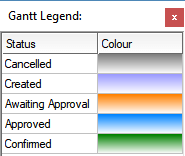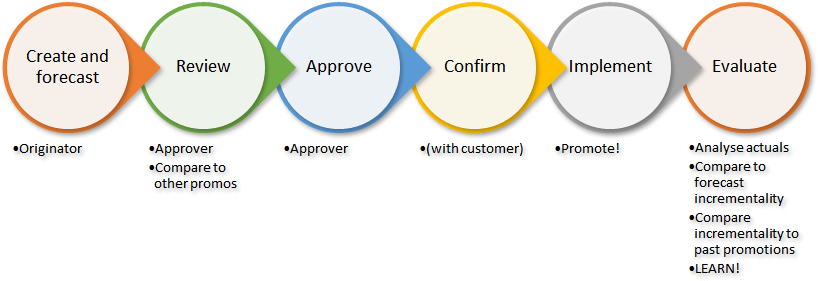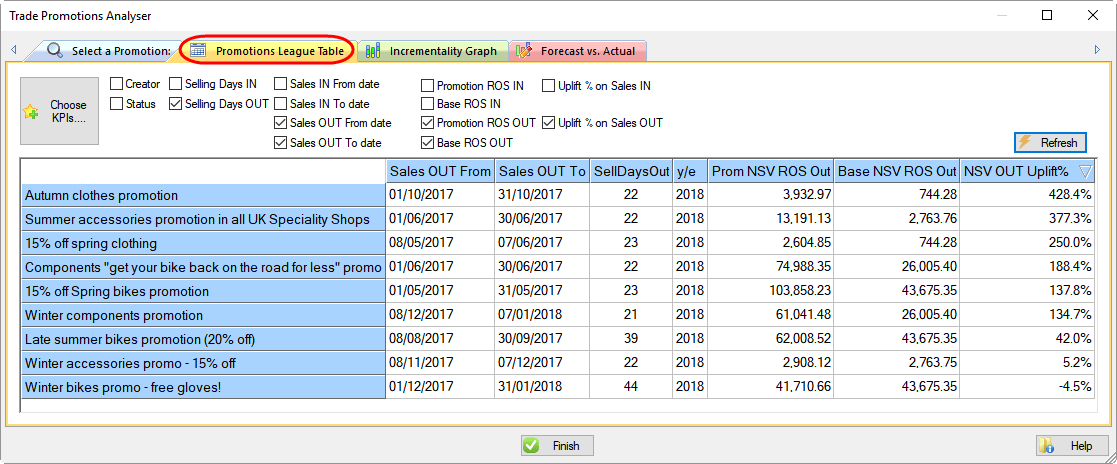Trade Promotions Planning in Prophecy
Forecasting and managing trade promotions is one of the most complex activities within the demand forecasting process.
- Promotions don't conveniently start and finish in your company's chosen forecasting periods.
- Multiple promotions may overlap a forecasting period.
- There is much more to planning promotions than merely forecasting them - e.g. an efficient workflow approval process, additional categorisation and other information fields, a mechanism for comparing and post-evaluating them etc.
- Planning promotional volumes in isolation is dangerous. You need to understand the overall positive or negative financial impact of the promotion.
- Whatever statisticians or software vendors assert, it is mathematically impossible to separate promotional and non-promotional sales. Every proposed method is a compromise, although a compromise that provides a basis for comparing promotions and an approximate estimate of a promotion's incrementality is better than no method at all.
If implementing a demand forecasting solution in Excel spreadsheets is difficult, integrating it with promotional planning is even harder without multiple, interlinked spreadsheets and the associated maintenance, security and integrity issues!
Prophecy's integrated Trade Promotions Planning module addresses these complexities in a simple and understandable way. It has been designed as an optional feature of a standard Prophecy database. It can be added to an existing Prophecy database at any time and with relatively little implementation resource.

What is a "promotion" in Prophecy?
A trade promotion applies to a selection of products, customers and to a time range which is independent of whatever time range your Prophecy database uses. It has a set of properties, such as short and long, description, in-store and sales-out dates, originator, progress status etc..
A promotion's 'status' determines its progress from creation to completion. Each TPM implementation can define its own set if statuses - for example:

In addition to mandatory properties of a promotion you can add any number of informational custom fields to each promotion, as well as unlimited diary notes.
How does Prophecy help manage promotional approval?

Users inherit their Prophecy customer and product security but, additionally, are assigned TPM "roles". These "roles" are available, and a Prophecy user can be assigned more than one role. The roles support TPM workflow from creation and forecasting through to post-promotional evaluation:
Prophecy Trade Promotions Management ("TPM") supports a hierarchical review and approval structure.
- Originator: An originator can create new promotions for the products and customers for which they have standard Prophecy security rights for. There are implementation specific settings for additional activities - such as which progress statuses they may apply to a promotion, whether they can also delete a promotion etc..
- Approver: An Approver user also has nominated 'originators', who are Prophecy users for whom the Approver can approve promotions (by changing their status to 'Approved'). There are implementation specific settings for additional activities - such as which progress statuses may be applied to a promotion, whether a promotion can be deleted etc..
- Viewer: Any other user who is not an Originator or Approver will need to be a Viewer in order to inspect promotions in any of the TPM screens. Prophecy users who are not members of this role cannot inspect the promotion specifics but can see the effect of the promotions within standard Prophecy reports.
The progress of a promotion in Prophecy TPM is therefore from creation (and forecasting) by the Originator user (the normal forecaster for the specified customer[s] and products), through the approval process by one or more Approver users (multi-level approval is supported) until the promotion is confirmed as final. (Even then, with appropriate rights assigned to the role and user, a promotion can still be cancelled and removed from Prophecy).
How does Prophecy™ Help Evaluate Promotions?
Calculating promotional incrementality is an art and not a science because it is impossible to know for sure what the sales before, during and after the promotional period would have been in the absence of the promotion.
Assumptions therefore need to be made on non-promotional running rates. Splitting sales into 'promotional' and 'non-promotional' from ERP data is also problematic. EPOS data can help, but is difficult to accurately align with ERP data.
Prophecy™ uses an incrementality algorithm which splits out sales within a measure based on the documented promotional dates, comparing rate of sale (ROS) per selling day during the promotion with the ROS during the unpromoted time ranges in the year. This approach provides a simple, uncomplicated method for comparing promotions.

More information on Prophecy™ Trade Promotions Management
For more information on Trade Promotions Planning in Prophecy please contact Data Perceptions.
View our Trade Promotions Management facts sheet here, or click here to download a PDF version.
